Dates 20 Jan 2017 – 19 Nov 2017 | ||
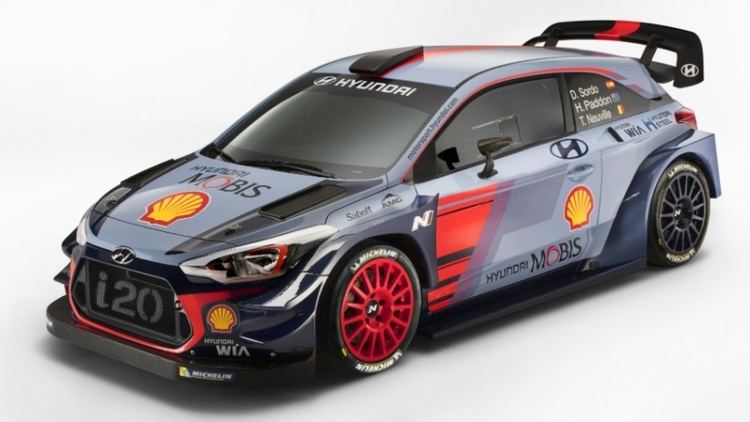 | ||
The 2017 FIA World Rally Championship is the forty-fourth season of the World Rally Championship, an auto racing championship recognised by the Fédération Internationale de l'Automobile (FIA) as the highest class of international rallying. Teams and crews are competing in thirteen events—starting in Monte Carlo on 19 January and ending in Australia on 19 November—for the World Rally Championships for Drivers, Co-drivers and Manufacturers. Drivers are free to compete in cars complying with World Rally Car and Group R regulations; however, only Manufacturers competing with World Rally Cars are eligible to score points in the Manufacturers' championship. The series is once again supported by the WRC-2 and WRC-3 championships and the newly created WRC Trophy at every round, and by the Junior World Rally Championship at selected rounds.
Contents
- Season calendar
- Calendar changes
- Route changes
- Entries
- Team and crew changes
- Technical regulations
- Sporting regulations
- 85me Rallye Automobile Monte Carlo
- 65th Rally Sweden
- Scoring system
- References
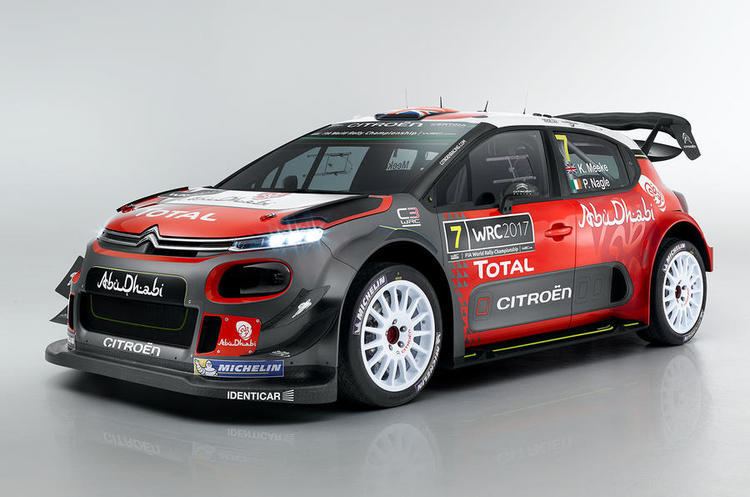
The 2017 season saw substantial revisions to the technical regulations aimed at improving the performance of the cars and offering teams a greater degree of technical and design freedom. Toyota returned to the sport as a full manufacturer team, entering the Toyota Yaris WRC, as did Citroën, who returned to full-time competition after contesting a partial campaign in 2016. Conversely, Volkswagen formally withdrew from the championship at the end of the 2016 season.

Sébastien Ogier and Julien Ingrassia are the defending World Drivers' and Co-drivers' Champions, after securing their fourth World Championship titles at the 52º Rally Catalunya. Volkswagen Motorsport, the team Ogier and Ingrassia won their titles with, are themselves the reigning World Manufacturers' Champions, having secured their fourth title at the 72nd Wales Rally GB. However, the team did not return to defend their title after parent company Volkswagen's withdrawal from the sport.

After two rounds, Jari-Matti Latvala and Miikka Anttila lead the World Championships for Drivers and Co-drivers by four points ahead of Ogier and Ingrassia respectively. Ott Tänak and Martin Järveoja are third, a further three points behind. In the World Championship for Manufacturers, M-Sport World Rally Team lead Toyota GAZOO Racing WRC by twenty points, with Hyundai Motorsport in third.
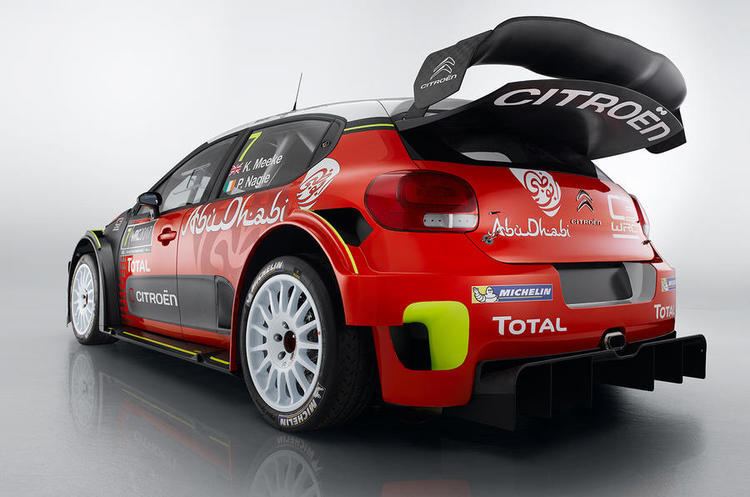
Season calendar
The season is being contested over thirteen rounds in Europe, North and South America and Australia.
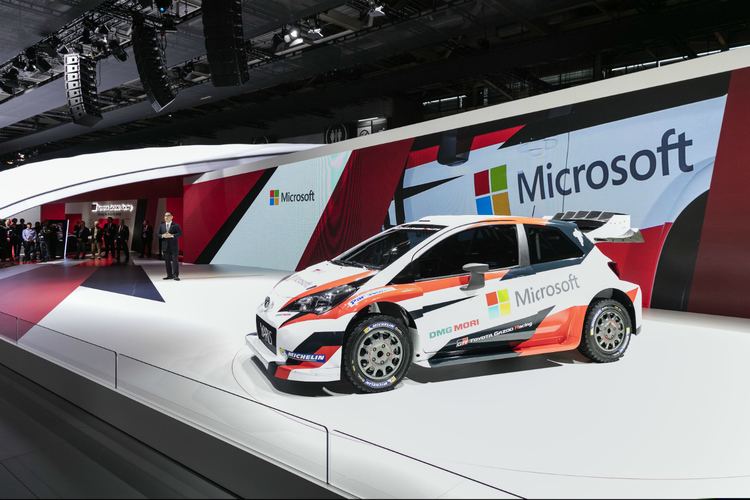
Calendar changes
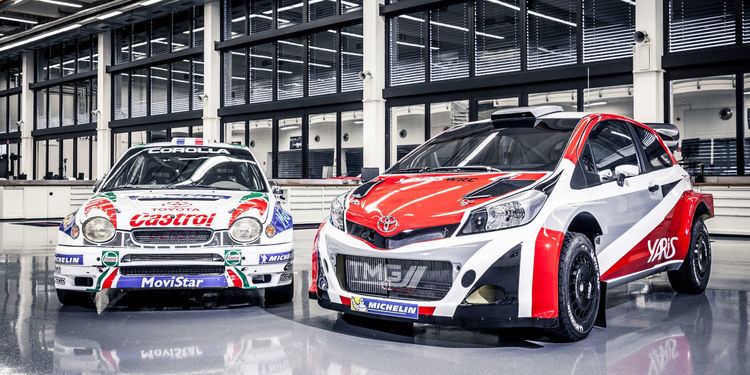
The FIA re-organised the calendar for the 2017 season to include a greater variation in surfaces between events, bringing the Tour de Corse forward from October to April. The decision was made after concerns were expressed about the 2016 calendar, which originally contained six consecutive gravel events followed by four tarmac rallies.
The Rally of China was removed from the calendar. The event had been included on the 2016 calendar before storm damage to the proposed route forced its cancellation. The round was removed from the 2017 calendar to give event organisers more time to prepare for a future bid to rejoin the calendar. Similarly, the FIA put the Rallies of Argentina and Poland on notice regarding safety concerns, threatening to rescind their World Championship status for the 2017 season unless safety standards were improved in 2016, with drivers citing a lack of safety marshalls and expressing concerns over spectators getting too close to the cars as the main areas to be addressed. Both events were subsequently included on the calendar.
The Rally of Sweden was the only event to change its headquarters, staying within Värmland County but relocating from Karlstad to Torsby.
Route changes
The Rallye Monte-Carlo introduced a heavily revised itinerary, with eighty-five percent of the route used in 2016 being revised for the 2017 event, which saw the competitive distance increase from 337.59 km to 382.65 km and included the Col de Turini as part of the Power Stage. Rally Sweden adjusted its route to remove the emphasis on purpose-built stages that had filled out the event itinerary in previous years. The new route raised the average speed of the rally and introduced more competitive mileage in Hedmark County in neighbouring Norway.
Rally Mexico also featured route revisions, with the eighty-kilometre Guanajuato stage—the longest in the championship in 2016—removed from the schedule; however, the addition of new stages and further changes to existing ones meant that the overall competitive distance of the 2017 rally was only six kilometres shorter than the route used in the 2016 event. The rally is scheduled to start in Mexico City with a spectator-friendly stage before moving to its traditional headquarters in León. The Tour de Corse shortened its route by seventy-four kilometres, from 390.92 km in 2016 down to 316.76 km in 2017, with most of the changes coming from shortening each of the individual stages used in 2016.
Entries
The following teams and drivers have been entered for the rallies in the 2017 World Rally Championship:
Team and crew changes
M-Sport entered the Ford Fiesta WRC, based on the Fiesta RS WRC and updated to fit the 2017 regulations. The team secured Sébastien Ogier and Julien Ingrassia to drive one car, and re-hired Ott Tänak, who returned to the team after contesting the 2016 season with DMACK World Rally Team. Tänak changed co-drivers, with Martin Järveoja replacing Raigo Mõlder. Elfyn Evans and Daniel Barritt returned to the premier class after contesting the 2016 season in the WRC-2 category, swapping places Eric Camilli and Benjamin Veillas, who stayed with M-Sport and were entered in the WRC-2.
M-Sport continues to operate their customer programme, with Adapta World Rally Team returning to the sport and merging with Jipocar Czech National Team, starting the season from the 65th Rally Sweden. Mads Østberg and Ola Fløene will compete in one, with the team expanding to two cars later in the season; the second will be driven by Martin Prokop, who will himself return to the World Rally Championship after missing the second half of the 2016 season. Lorenzo Bertelli, Simone Scattolin and their FWRT team acquired a Fiesta for the Rally Mexico, which like the Jipocar entry in Sweden, will be run by M-Sport. DMACK World Rally Team will no longer operate as a customer team, instead becoming a partner and supplier of M-Sport, providing tyres and sponsorship for Elfyn Evans' entry.
Hyundai entered a three-door variant of the i20 WRC, known as the i20 Coupe WRC, having used the five-door model in competition throughout the 2016 season. The team had previously used a three-door model in 2014 and 2015 before being forced to adopt the five-door model in 2016 for logistical reasons. However, the team considered the three-door model to be better-suited to competition, and developed the i20 Coupe WRC around it. Hyundai elected to retain the three crews—Thierry Neuville and Nicolas Gilsoul, Hayden Paddon and John Kennard, and Dani Sordo and Marc Martí—who drove for the team in 2016 to contest their 2017 campaign.
Citroën returned to the sport with a fully factory-supported team after competing part-time in 2016 to focus on the development of their 2017-generation car. The DS3 WRC was succeeded by the C3 WRC, a brand-new car based on the Citroën C3. The decision to re-enter the World Rally Championship coincided with Citroën withdrawing its factory support for the Citroën C-Elysée WTCC and its World Touring Car Championship programme. The team signed Kris Meeke and co-driver Paul Nagle to contest the full season, while Craig Breen and Scott Martin will share a car with Stéphane Lefebvre between events—as they did in 2016—until a third C3 WRC becomes available; Citroën also entered a DS3 WRC for Breen and Lefebvre. Gabin Moreau returned as Lefebvre's co-driver following an injury at the 34. Rallye Deutschland that saw him sit out the final events of the 2016 season. Khalid Al Qassimi is scheduled contest selected events in a fourth C3 WRC.
Toyota returned to the sport after eighteen years, entering the brand-new Toyota Yaris WRC under the banner of Toyota GAZOO Racing WRC. The development and operation of the cars is overseen by four-time World Drivers' Champion Tommi Mäkinen. Jari-Matti Latvala and co-driver Miikka Anttila left Volkswagen Motorsport following the team's withdrawal from the sport to join Toyota, where they are partnered with Juho Hänninen—who returned to the championship for the first time since 2014—and Kaj Lindström. Reigning WRC-2 champions Esapekka Lappi and Janne Ferm are scheduled to make their début in a WRC specification car, contesting a partial campaign once a third Yaris WRC becomes available. Toyota last competed in the sport as a factory-supported team between 1997 and 1999 with the Corolla WRC before withdrawing ahead of the 2000 season to focus on its Formula One project.
Volkswagen scaled back their involvement in the sport, withdrawing their entry as a manufacturer at the end of the 2016 season and cancelling the Polo R WRC programme in light of the emissions scandal that broke in 2015. Volkswagen instead switched focus from a factory-supported team to a customer programme with a Polo rally car built to R5 regulations and scheduled for introduction in 2018. The 2016 specification of the Polo R WRC was made available to privateer entries and the 2017 model, known as the Polo WRC, was abandoned after the FIA denied an exemption to homologation regulations that would have allowed the Polo WRC to compete in 2017. While Latvala and Anttila moved to Toyota and Ogier and Ingrassia left to join M-Sport, Andreas Mikkelsen and Anders Jæger were unable to secure a seat in a World Rally Car and so started the season contesting the World Rally Championship-2 in a Škoda Fabia R5.
Technical regulations
The sport underwent a revision of the technical regulations for 2017, introducing a variety of changes aimed at improving aerodynamic and mechanical grip, with modelling suggesting that average stage speeds is expected to increase to the point where stage records could be broken by up to thirty seconds and drawing comparisons to the defunct Group B regulations. These changes include:
In order to promote further manufacturer participation, homologation requirements were relaxed to allow any production car that is at least 3.9 m (12.8 ft) long to be eligible for recognition as a World Rally Car. The designs of the cars were to be finalised by September 2016 and submitted for homologation by 1 November 2016.
Sporting regulations
The points-scoring system for the World Championship for Manufacturers was changed, with manufacturers permitted to enter at least two and as many as three crews in each round, with the best two results being awarded points. Changes were also made to the points awarded for the Power Stage, with points awarded to the top five drivers.
The FIA will exercise stricter controls over which drivers are eligible to compete in 2017-specification cars by only permitting registered manufacturers to enter 2017-specification cars. The rule was introduced as a response to concerns over inexperienced drivers and drivers paying for the opportunity to race being able to compete in the more powerful 2017 cars without oversight. The controls stop short of a licensing system similar to the one used in Formula One to allow experienced guest drivers to compete part-time. To complement this, a new privateers' championship to be known as the WRC Trophy is scheduled to be contested for crews entering World Rally Cars used between 2011 and 2016. Crews competing in the WRC Trophy will nominate seven rounds at which they will be eligible to score points, with their six best results counting towards their final points tally.
Further changes were made to the sporting regulations, with the rules governing the running order—the order in which crews enter a stage—reverting to the system used in 2014 to address concerns over road sweeping, whereby championship leaders were forced to clear the roads of loose gravel, costing them time and exposing the harder-packed and faster road base for following drivers to take advantage of. Under the reintroduced rules, the crews will enter a stage in championship order for the first day of competition, and then in reverse championship order for the remaining legs of the event.
85ème Rallye Automobile Monte-Carlo
Rallye Monte Carlo saw Sébastien Ogier and Julien Ingrassia start their title defence with a win, recording their fourth victory in the event and M-Sport's first win since the 68th Wales Rally GB in 2012. Jari-Matti Latvala and Miikka Anttila finished second on Toyota's return to the sport, with Ott Tänak and Martin Järveoja completing the podium. Thierry Neuville established an early lead as the opening stages were marked by attrition; Ogier lost forty seconds when he slid into a ditch, Kris Meeke and Juho Hänninen crashed out and restarted the next day with a penalty, Stéphane Lefebvre suffered a gearbox failure, and Elfyn Evans struggled for grip on the icy surface. Neuville carried the overnight lead from Ogier, who had recovered from ninth after his off, and Tänak. Neuville extended his lead to over a minute on the second leg of the rally as Ogier took a conservative approach to the icy roads. He gradually started to recover during the second pass over the day's stages, and inherited the lead when Neuville crashed on the final stage of the day, breaking his suspension and losing half an hour. Neuville's accident also handed Jari-Matti Latvala a provisional podium position. Dani Sordo encountered problems in the sister Hyundai, struggling with a loss of power steering, while Meeke was forced to retire after a collision on the road section between stages. Meanwhile, Evans regained his confidence on the dry tarmac and won three of the day's five stages to secure sixth place going into the final day of competition. The final leg of the rally saw Tänak develop a misfire that allowed Latvala to pass him for second and left him vulnerable to Sordo. A late change in the weather on the final stage left the field contending with difficult conditions; while Ogier and Latvala drove conservatively to secure first and second, while Tänak withstood pressure from Sordo to finish third. Sordo and co-driver Marc Martí finished the event fourth ahead of Craig Breen and Scott Martin who were the leading Citroën crew despite driving a year-old DS3 WRC. Elfyn Evans and Daniel Barritt finished sixth, while seventh and eighth place went to World Rally Championship-2 entries; driving a Škoda Fabia R5 in a guest appearance, Andreas Mikkelsen and Anders Jæger finished ahead of Škoda Motorsport teammates Jan Kopecký and Pavel Dresler. Stéphane Lefebvre and Gabin Moreau overcame their penalty for restarting under Rally-2 regulations to finish ninth, while WRC-2 entrants Bryan Bouffier and Denis Giraudet completed the top ten in a Ford Fiesta R5. Thierry Neuville and Nicolas Gilsoul scored an additional five points for winning the Power Stage.
The rally was overshadowed by a fatal accident involving a spectator on the opening stage when Hayden Paddon lost control on a patch of black ice and hit the spectator as he rolled into an embankment, blocking the roadway. The stage was stopped—and ultimately cancelled—as medical attention was sought and the car cleared away, but the spectator later died of his injuries. Although eligible to restart under Rally-2 regulations, Paddon withdrew from the event.
65th Rally Sweden
Jari-Matti Latvala and Miikka Anttila won the Rally of Sweden, and combined with five bonus points for winning the Power Stage, took the lead of the drivers' and co-drivers' championships. The result marked Toyota's first World Rally Championship victory since Didier Auriol and Denis Giraudet won the 3rd China Rally in 1999. Ott Tänak and Martin Järveoja finished second, while Sébastien Ogier and Julien Ingrassia completed the podium and allowed M-Sport to retain the manufacturers' championship lead. The first day of competition saw Thierry Neuville and Latvala emerge as the early contenders for the rally lead as drivers reported that the rough surface and frequent jumps interrupted the airflow over the cars and making the level of aerodynamic grip available inconsistent. As the crews began their second pass over the day's stages, the icy road surface began to break up enabling Neuville—whose road position meant that he had experience with the degrading road surface during the first pass—to break free, building up a twenty-second lead over Latvala at the end of the day, with Ott Tänak a further thirty seconds behind. Further down the order, Craig Breen struggled with snow drifts on his début in the C3 WRC; Juho Hänninen retired after damaging his radiator when he hit a tree; and Mads Østberg was forced out when the rear wing of his Fiesta WRC fell off. The second leg of the rally saw Neuville build his overnight lead to forty-three seconds, only crash out for the second event in a row. Tänak won every stage of the morning loop to put pressure on Latvala in second, closing to within five seconds when Latvala was forced to slow to avoid Kris Meeke as Meeke attempted to return to the stage after an off. Sébastien Ogier, running ahead of Meeke and therefore unimpeded, started to catch Tänak and was thirteen seconds behind the Estonian as the crews started the final stage of the day, a short super-special stage. Neuville crashed and broke his steering, forcing him out of the event and handing the provisional podium positions to Latvala, Tänak and Ogier; Neuville ultimately salvaged three points on the Power Stage. The third day started with Ogier spinning on the opening stage and losing ground to the leaders; meanwhile, Latvala won the opening stages to consolidate his lead over Tänak. Tänak was unable to respond on the Power Stage, handing Latvala his fourth victory in Sweden. Dani Sordo and Marc Martí finished fourth ahead of Breen and Scott Martin. Elfyn Evans and Daniel Barritt survived a late push from Hayden Paddon and John Kennard to secure sixth. Stéphane Lefebvre and Gabin Moreau finished eighth, having reverted to a year-old DS3 for the event. WRC-2 entrants Pontus Tidemand and Jonas Andersson finished ninth in a Škoda Fabia R5, while Teemu Suninen and Mikko Markkula completed the points-scoring positions in a Ford Fiesta R5.
Scoring system
Points are awarded to the top ten classified finishers. In the manufacturers' championship, points are only awarded to the top two classified finishers representing a manufacturer and driving a 2017-specification World Rally Car. There are also five bonus points awarded to the winners of the Power Stage, four points for second place, three for third, two for fourth and one for fifth. Power Stage points are only awarded in the drivers' and co-drivers' championships.
